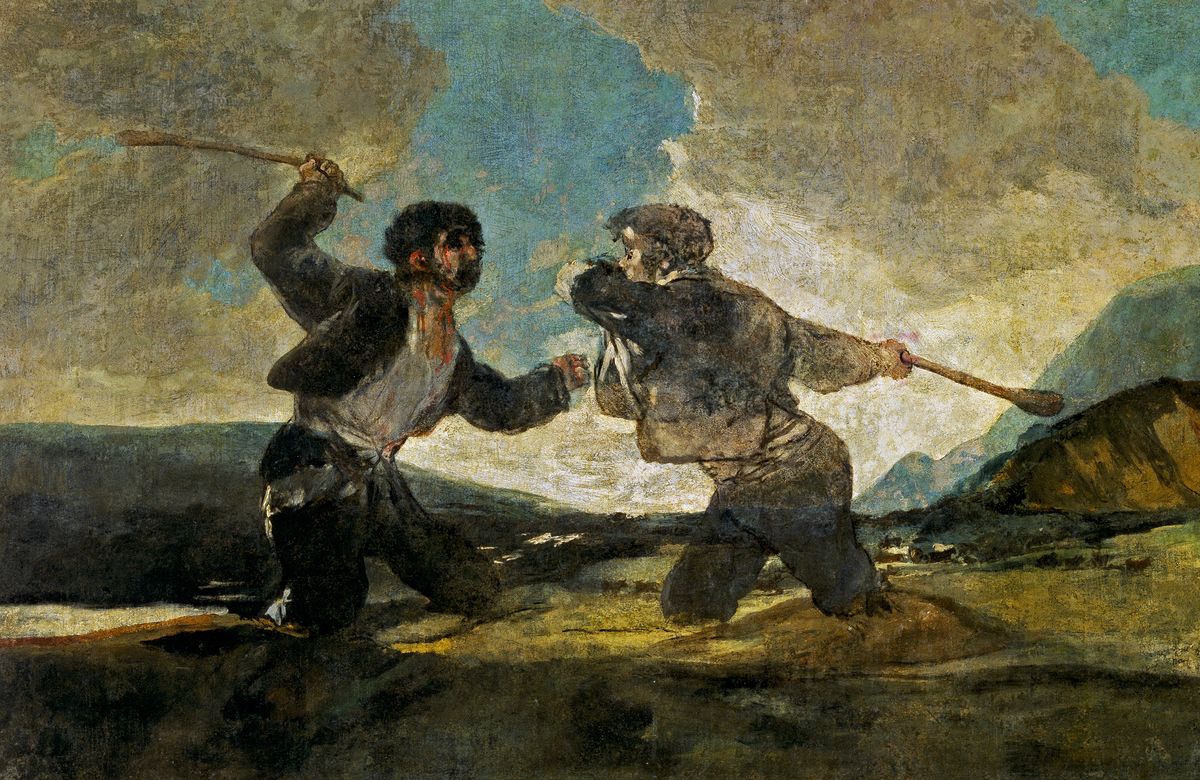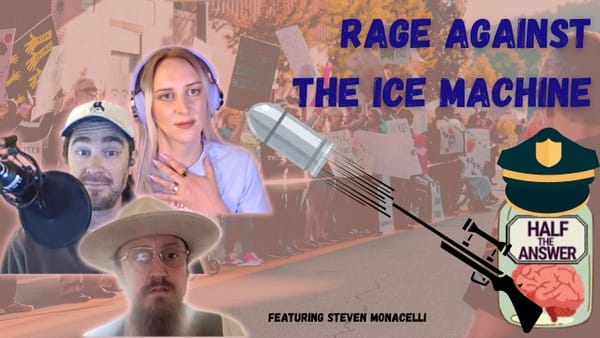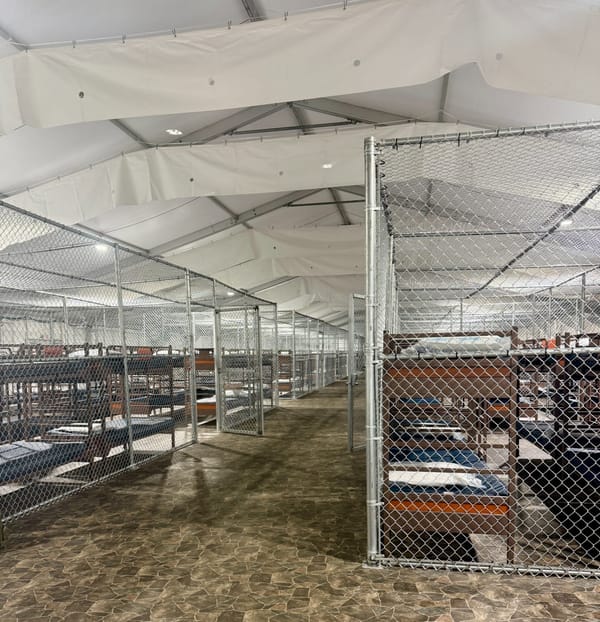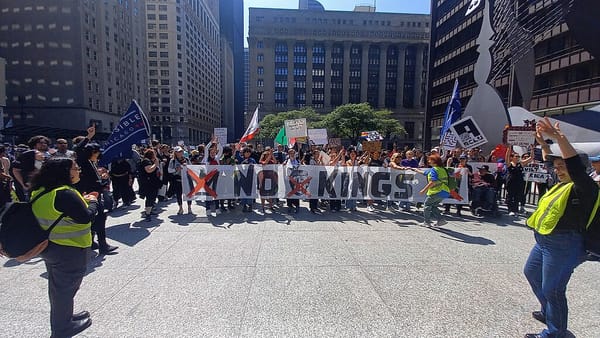Finding Liberty Between Vulnerability and Coercion

The sources and extent of coercion in a society is one of the big fault lines that divides the different currents of liberalism. Paul Crider’s remark that “Coercion is an unsavory but unavoidable aspect of living with other people” offended several of our readers, while many of the comments on Samuel Hammond’s recent piece argued that capitalism is the source of all systemic oppression. In reality, neither markets nor government nor any other sphere of society has a monopoly on violence, cruelty, or domination, and any system which attempts to rein these in across the board will necessarily involve coercion.
The relationship between children and their parents is a good starting point for a discussion of vulnerability and the need for at least some coercion. Children have many characteristics that render them uniquely vulnerable, as will be discussed below. Moreover, child-rearing has always been challenging for liberal jurisprudence, which tends to rely on a particular ideal of adulthood. But we could start from any human relationship. Whether it is between friends, coworkers, client and server, boss and employee, or strangers. All bring their potential vulnerabilities. Every method for guarding those vulnerabilities creates its own vulnerabilities in turn. Courts are intended to provide a third-party perspective without a stake in the case under examination, but suffer the biases of the particular backgrounds of the judges. Unions arose to correct the imbalance of power between employers and employees, but they ended up with a mixed legacy on race, and often used their leverage to help skilled workers at the expense of the more vulnerable unskilled workers and women.
Suffer the little children
There is no relationship more basic than the one between a parent and child. Biology has wired parents to worry about their children and be upset when they are harmed or unhappy. The evolutionary pressures here are fairly straightforward and point in basically one direction—towards promoting the safety and prosperity of one’s offspring. And it is basically universal across cultures that parents are given special social roles when it comes to taking responsibility for the care and upbringing of their children.
Instinct, evolutionary pressures, and culture therefore all work together to make parents the best possible caretakers of their own children. Yet child abuse is hardly unheard of. Whether it involves beating, or sexual assault, or simply emotional manipulation, parents are frequently the perpetrators. This is because they are in the best position to be perpetrators—children are in a relationship of dependence with their parents. Dependence creates vulnerability.
This does not negate the very good reasons for parents’ special role. There isn’t anyone who would be at lower risk for abuse of the caretaker role than parents. But parents’ risk is uncomfortably far from zero.
How should the laws and institutions around childcare be organized, given these facts? Emancipating children isn’t an option. Children are dependent and vulnerable by their nature. Arguments about whether teenagers could take on more adult responsibilities are about the placement of the line, not its existence. No one thinks an infant can provide for himself, much less vote or drink beer or serve in the military.
This issue goes beyond vicious behavior. Even after infancy, children lack the experience to rely on their own judgment for many years. If a child does not want to go to school or visit a relative, their parents have the authority to make them. When a parent ends an argument with “because I said so,” a pure argument from authority, it is nevertheless a valid reason for the child to obey, even if they have reasons not to. Parents get to decide on a wide range of affairs that will continue to have an impact into adulthood. There are clearly important matters such as the sort of education their child gets—whether a conventional public school (in a good or bad school district), or a Catholic school, or something unconventional like a Montessori school. Then there are smaller things: whether to make their child take piano lessons, or to send them to a summer camp, or to set a curfew on how late they can be out with friends. These things all influence the child’s trajectory, however small the difference it may make in the course of their life. However harmless and even beneficial these parental decisions are, they still constitute a kind of coercion, if we take the word to mean the imposition of one person’s will over another.
Coercive justice
What do we do when parents neglect their responsibilities or harm their children through active malice? The current answer to this question in most countries is to bring in the criminal justice system. We have laws that are enforced by police, prosecutors who seek to get offenders punished, and courts to determine guilt and the severity of the punishment. But all of these carry their own risks, individually.
Mere contact with the police creates the risk of a violent altercation, because of several important asymmetries. Police are constantly looking out for the risk that someone might attack them, because the nature of their job puts them in dangerous situations. Meanwhile the vast majority of civilians do not perceive themselves to be in a dangerous situation, especially if the contact with the police is over something like a speeding ticket or being a little disorderly in public. That is an asymmetry in perception; the other asymmetry is that most criminal justice systems end up effectively holding their police to a lower standard than civilians. Whether it’s because juries trust police or because prosecutors rely on their relationship to them, an officer who physically assaults civilians without justification is much more likely to get away with it than a civilian who does the same—never mind a civilian who assaults an officer!
As a result, simply bringing the police into the picture at all drastically increases the chance that matters will come to violence. Meanwhile, prosecutors make their careers by getting convictions, not by dropping charges when matters appear ambiguous. And in America, prosecutors are granted such broad discretion in filing charges that they can intimidate most suspects by cobbling together enough charges to result in enormous potential jail time, and use this threat as leverage to get plea bargains. Faced with 60 years in jail, many innocent people may opt for a guarantee of less than 10. Such tactics resulted in the suicide of the tech luminary Aaron Swartz in 2013.
Judges and juries, meanwhile, are entirely removed from the circumstances. They have to make their judgments based on the evidence that can be presented in a courtroom, which is obviously partial and imperfect. Their individual ability to make good judgments on the basis of that or any evidence is just as obviously imperfect.
The long and short of it that once we empower police, prosecutors, and judges to coerce people in order to protect certain vulnerabilities, it simply creates more vulnerabilities. And police, prosecutors, and judges are all systemically biased towards certain abuses. In attempting to stop abuse they create the risk of abuse, in attempting to correct coercion gone wrong they introduce the possibility of their own variety of coercion going wrong.
Not a ‘liberal problem’
Some might argue that these are problems particular to a liberal order; that settled religious communities would be much better at internally policing such things without the razor-sharp edges of a modern criminal justice system. But closeness breeds many of the same risks we already see within families—only more so, because those outside the family lack the pressures mentioned above that parents face, and are potentially capable of perpetuating abuses on a larger scale. Sexual assault is a real problem among the Amish, though the scale is very hard to know from the outside. The more famous Catholic Church abuses occurred in less isolated communities, but the dynamic is similar. The high-trust social environment so praised by traditionalists is exactly what leaves people, and especially children, vulnerable. Trust can be abused—in a way, trust is vulnerability. They call it “sticking your neck out” for a reason. And when trust is placed in authority, and authority is abused, those who fear the erosion of that authority have a strong incentive to cover it up rather than face it .
Nor do kinship-based clans escape this tragic dilemma. Even when there is no central authority capable of meting out official punishment—as in medieval Iceland or any number of stateless clan-based societies throughout history—the individual is vulnerable to the needs of the family and clan. Indeed, the individual in these societies isn’t really understood as an “individual” at all but rather a member of the clan who must fulfill certain roles. This places especially great burdens on women, who must fulfill the maternal role for the sake of lineage. Transgressions against the family honor, real or imagined, result in oppressive shame. And in the worst cases individuals are at risk of honor killings and deadly inter-clan feuds.
We should never forget that in Europe in the Middle Ages, a period between the rise of strong empires like Rome and the modern nation-state, the murder rates were horrifically high by modern standards. If it is true, as Judith Shklar says in “The Liberalism of Fear,” that “Systematic fear is the condition that makes freedom impossible,” then we should be incredulous of any claim that the only threat to liberty in the United States is its democratic nation-state.
From a certain perspective, the liberal project is the attempt to balance authority and the sources of coercion against one another, in just such a way as to minimize cruelty and vulnerability as much as any system can. This is precisely Shklar’s liberalism of fear, as opposed to the liberalism of hope of someone like Immanuel Kant. The liberalism of fear is the liberalism of checks and balances, due process protections, and separation of powers. Of democratic checks on powerful political elites, but also institutional checks on the tyranny of the majority. Of property rights to protect the fruits of labor, but also redistributive social safety nets to protect against misfortune.
Consider the case of Tony and Susan Alamo Foundation v. Secretary of Labor. The Alamo Foundation ran a plethora of commercial ventures which they staffed with “associates,” ostensibly volunteer labor. The Supreme Court ruled the foundation was in violation of the Fair Labor Standards Act, legislation which chafes conservatives and libertarians. But Nancy Rosenblum explained why the application in this case was consistent with liberal principles:
Before their conversion and rehabilitation, Foundation associates were mostly drug addicts, criminals, and derelicts. Like the Unification Church, Alamo was widely thought to prey on the vulnerable and to take advantage of the intense need for connection and care, perhaps by engaging in infantilizing and guilt-inducing recruiting practices that made voluntarism doubtful. Former associates testified that they had been “fined” heavily for poor job performance and were prohibited from getting food from the cafeteria if they were absent from work due to illness or bad weather; members’ standing seemed closer to indentured servitude than volunteerism.
This is a classic case of the federal government intervening in the operation of an association whose internal norms are incongruent with liberal principles. But sometimes it is precisely such incongruent associations which are the lifeblood of liberal institutions. At the time Rosenblum’s book, Membership and Morals, was written, Jehovah’s Witnesses had litigated 40 precedent-setting Supreme Court cases and 150 state supreme court cases, most of which expanded the scope of our First Amendment protections.
The point is that there is no one way to deal with the problem of vulnerability, cruelty, or the ways that coercive powers can be abused. But the first step is to admit that these things are not going away; they are a basic feature of human nature. No specific set of relations or spheres of society creates a single supreme villain; all carry their own risks. Delicately balancing these risks has been the task that liberals have set themselves to for over 300 years.
Featured image is Fight With Cudgels, by Francisco Goya




